The Latin American pantry items chef Alejandro Saravia swears by – and where he buys them from
The influential Peru-born chef behind Morena in Sydney and Melbourne shares the authentic ingredients he always has on hand, and how he likes to cook with them.
“Do you want to try an empanada?” says chef and restaurateur Alejandro Saravia, eyeing off the cabinet of house-made pastries at Casa Iberica Deli, a longtime Latin American landmark in Melbourne’s Fitzroy.
As we scoff our empanadas, owner Jose de Sousa proffers fresh, hot chorizo for us to try. “This is very authentic,” says Saravia, waving his chorizo-spiked toothpick around at the room for emphasis. “Casa Iberica is like a bodega, a corner shop you’d find all over Latin America. To have a deli like this is such an experience.”
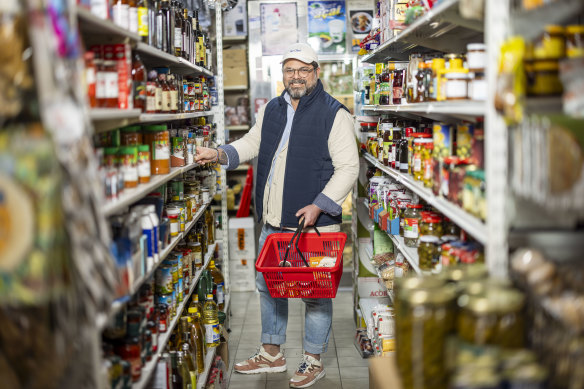
In Sydney, he loves Tierras Latinas in Fairfield. “I love its authentic bodega culture. You can purchase the best produce imported from Latin America, but also some traditional locally produced small goods. These types of bodegas bring communities together and help promote our cultures.”
Lima-born and French-trained, Alejandro Saravia is a Peruvian juggernaut of Australia’s dining scene.
In Melbourne’s CBD, he co-owns Farmer’s Daughters, a three-level deli, restaurant and rooftop bar, and Victoria by Farmer’s Daughters in Fed Square, both of which source ingredients directly from Victorian farmers and producers.
In April, Saravia opened Latin American diner Morena in Sydney’s Martin Place, which champions NSW’s growers, and he has just opened a second Morena in Melbourne.
Saravia is passionate about Peru and gastronomy’s role in its identity.
“There was a stigma [about] Peru in the ’80s and the beginning of the ’90s, and Latin America’s narcotic traffic” says Saravia.
“When we started to position ourselves as the gastronomical capital of Latin America, there was a lot of change and positive attitude. Peruvians started to put their heads up and be proud of being Peruvian. Gastronomy changes the global perception.”
He and his two sons, aged four and six, recently ate their way through Lima. “It was so nice to show them where I grew up, and they loved the diversity of the food,” he says. “I cook every day. I love cooking for my boys, and it’s very Latin American the way I cook at home. We always have rice, a salad, a protein, and if we have lunch, we’re sitting at the table.”
Here are Saravia’s hit picks to cook like a modern Peruvian chef, with a goodly dash of Incan tradition minus the alpacas.
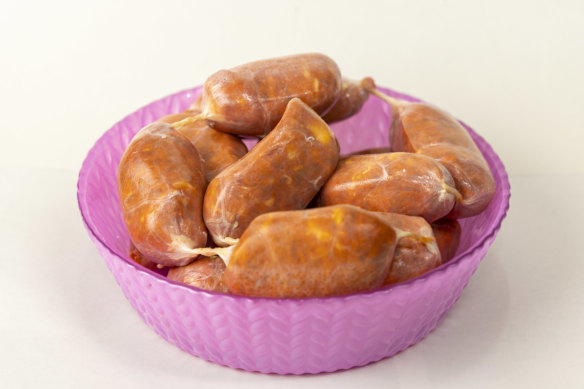
Chorizo
Casa Iberica’s chorizos are all handmade, turned into fresh sausages or hung and dry-aged to make salamis. “I like the smalls ones,” says Saravia, ordering a few from the deli counter. “They’re less spicy and easy to handle.”
You can often buy the chorizo sausage mix separately, too, which Saravia uses as empanada filling, to stir through lentil stew, or for scrambled eggs. “Fry the sausage mix, scramble in the eggs, and just put it on a bun,” he says. “It’s way better than a bacon and egg roll!”
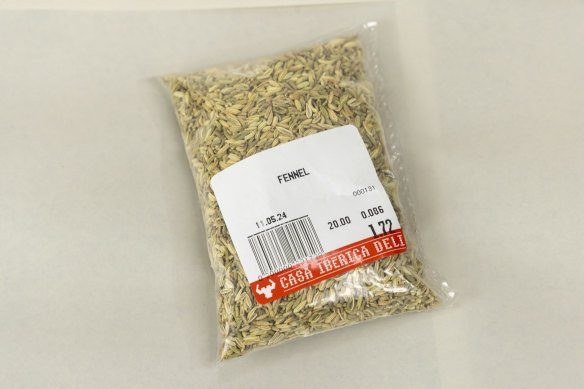
Spices
Coriander, fennel and cumin – these are Saravia’s big three, a killer combo of spices he loves to scatter on a juicy steak hot off the grill. The key? Toast them first. “Coriander seeds open up when they are toasted and are very fragrant,” says Saravia, “and a combo of fennel, coriander and cumin sprinkled on kingfish is a gamechanger.”
He uses whole or lightly crushed coriander seeds in salad dressings and adds whole fennel seeds to rice as it’s steaming to give it an anise flavour and aid digestion. “Cumin comes with the Spanish influence but is only utilised on the coast of Peru,” says Saravia.

Quinoa
“I like to use the blend,” says Saravia, plucking a three-mix packet of organic white, black and red quinoa off the shelf. His hot tip for transforming this ancient superfood is to cook it with a good whack of butter, “probably about a third of a 250-gram block, that’s my French training.”
Saravia confits finely diced shallots in butter until they are “sweet and beautiful,” then “that’s when I add the quinoa because quinoa cooks really quickly, just five minutes”. At the same time, he adds chicken or vegetable stock, and fresh thyme and sage. “Quinoa has a nutty flavour and sage works really well.”
Apple cider vinegar
“I always have a dressing in the fridge,” says Saravia who eschews white wine vinegar – “too aggressive, too sharp” – but loves the sweetness of raw apple cider vinegar and Spanish chardonnay vinegar for vinaigrette.
He emulsifies olive oil, egg yolk and dijon mustard, then adds apple cider vinegar and toasted spices, such as whole coriander seeds. “I like to bite into those spices. I think texture is important.”
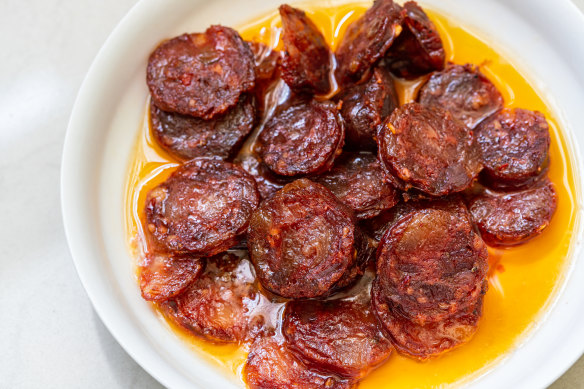
“Fry the sausage mix, scramble in the eggs, and just put it on a bun. It’s way better than a bacon and egg roll!”
Alejandro on chorizo
Fish sauce
The origins of fish sauce are murky. Food historians reckon ancient Mediterranean cooks added the liquid of salted, fermented fish to dishes around 300 BC. What’s not up for debate is whether fish sauce comes from Peru – it doesn’t – but you’ll still find it in Saravia’s pantry.
“There’s a lot of MSG used as a seasoning in Latin America,” he says, “and a lot of the newer chefs are utilising fish sauce to enhance the flavour and bring more umami to the dishes.” He adds fish sauce to his salad dressings, and says, “Even in stew, I’ll put a little bit at the end just to round the flavour.”
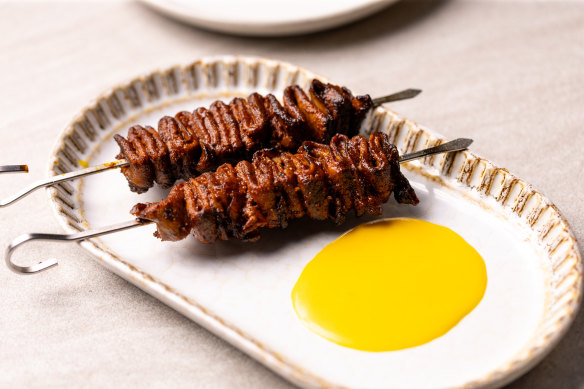
Aji
For the non-Spanish speakers among us, aji means chilli pepper, and unlike how many Aussies might pronounce it – “Arji, mate!” – the correct pronunciation is “ah-he”.
This fruity flavoured capsicum grows wild in South America. There are myriad varieties, but Saravia’s Holy Trinity are aji amarillo, aji mirasol and aji panca. “These three chillies are engraved in our cuisine and are the base of Peruvian food, from the coast to the Andean Sierras, and in some dishes in the Amazon jungle,” he says.
Aji’s sweet pungency gives dishes authentic flavour, and are essential for any budding Peruvian home cooks.
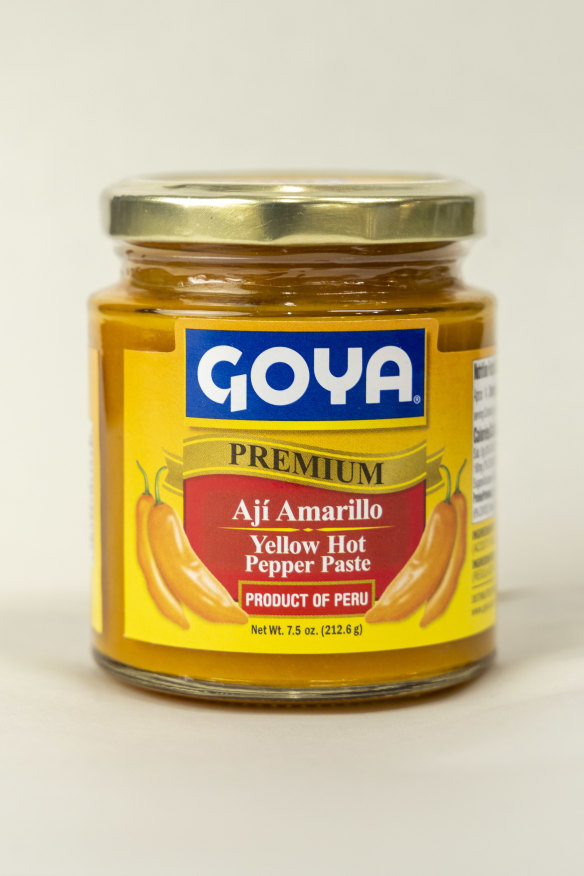
Aji amarillo
Saravia has aji amarillo (a chilli paste) “with everything” and loves its “fresh citrus flavour”. It’s made from a sun-dried yellow chilli, made into a paste with salt, and is packed with antioxidants.
“I use aji amarillo more to finish a dish,” says Saravia, “because you don’t want the brightness and the vibrant flavours to be dulled by the cooking process.”
Aji panca and aji miraasol
“Panca and mirasol are the two [pastes] I use for my marinades and sauces, for a base flavour,” says Saravia. Aji panca is a deep burgundy with sweet, peppery, and earthy characteristics, whereas aji mirasol is a yellow chilli with a citrus hit that works well in salsas.
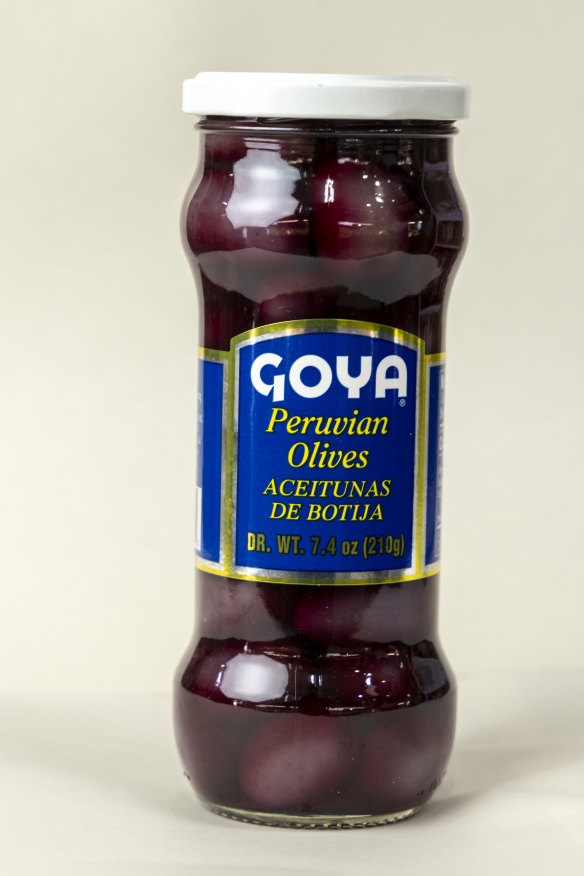
Peruvian olives
“Get these,” says Saravia, excitedly putting a jar of Peruvian olives in my basket. “It’s a completely different experience to Italian olives. Kalamata are really strong and sour. These ones are salty and plump, and really ‘meaty’.”
For the Peruvian equivalent of a classic curried egg sanger filling, he says roughly mash boiled eggs with chopped Peruvian olives, currants, mayo and a little aji amarillo. “It’s delicious.” Saravia also loves the mild flavour of Peruvian olives in potato salad.
Black lentils
Saravia’s midweek spag-bol equivalent? “For me, black lentils is a dish that takes me back to my childhood.”
Saravia sweats onion and garlic with fresh bay leaves and finely chopped carrot until soft. Then he briefly fries chorizo before scooping out the meat and setting it aside to add later, leaving “all the beautiful oils from the chorizo in the pot”.
Next, he throws in soaked-overnight black lentils and maybe a smoked ham hock, the meat pulled off the bone as it cooks down. All that gets braised in beef stock, the meaty chunks of chorizo added back in at the end.
“That’s the way my grandmother used to cook, and for me that brings a lot of memories of food, like a hearty, warm hug.” It’s always served with steamed white rice and a tomato and onion salad, which are essential sides, according to Saravia.
Casa Iberica Deli 25 Johnston Street, Fitzroy, Victoria casaibericadeli.com.au, Victoria
Tierras Latinas Shop 129/28 Smart Street, Fairfield, NSW tierraslatinas.net
The best recipes from Australia’s leading chefs straight to your inbox.
From our partners
>read more at © Sydney Morning Herald